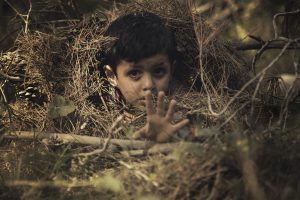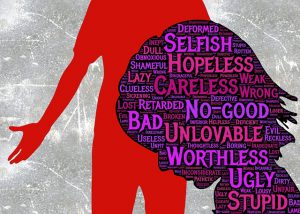Editor’s note: Many parents carry with them emotional wounds from their childhood. Past generations did not understand the effect of parenting with shame that researchers do now, and parenting with shame was pervasive. But as we know better, we have the opportunity — and responsibility — to do better. We now have decades’ worth of science backing API’s Eight Principles of Parenting, parenting behaviors that intentionally leave shame out of child-rearing.
Researchers can now show us how unresolved shame and the accompanying elevated stress hormones can reshape our lives through brain scans, heart function tests, and even DNA changes. A shame-based view of oneself has been implicated in a host of mental illnesses, including depression and anxiety, as well as eating disorders, self-harm, addictions, other poor coping skills, and even physical illness.
All of this knowledge can create anxiety in itself as we try to figure out which parenting behaviors can lead to feelings of shame in our children, and yet how to best guide our children through sometimes challenging areas of discipline. This week, we offer you a 5-part series — originating in The Attached Family online magazine’s “Parenting Without Shame” issue — to help you better understand the development of toxic shame:
First, a Lesson in Trauma
 Popular culture tends to define trauma as being the victim of harm, and it portrays trauma as being located in the harmful experiences themselves. This is a problematic misunderstanding that hinders healing.
Popular culture tends to define trauma as being the victim of harm, and it portrays trauma as being located in the harmful experiences themselves. This is a problematic misunderstanding that hinders healing.
The word “trauma” means a wound, shock, or injury. Thus, trauma cannot be defined only by the negative experiences we suffer. Equally important is the impact of these experiences upon us.
A painful and frightening experience might overwhelm one person and leave them with lasting emotional wounds, but not cause as much damage to another. It will depend on their age, innate sensitivity, unique personal history, and whether they have support.
When we experience pain and fear that overwhelms us, we develop an unconscious conviction that our life is at risk. As a result, survival systems are activated in our minds and in our bodies. These systems have evolved to protect us against dangers that arise both externally — from other people and the world in which we live — and internally: from within ourselves.
With the activation of these systems, we move onto a different developmental path to the one we would have followed, had we not been traumatized. Once on this pathway, we live our lives from inside an altered biological and psychological reality.
I’ve called this altered reality a “trauma-world.” It is the entry into a trauma-world that defines trauma — not the experiences we’ve suffered.
What Does Trauma Have to Do With Shame?
Three systems form the core of all trauma-worlds:
- We perceive the world through a veil of FEAR — We are intrinsically wary of the world around us and mistrustful of other people. We are equally uneasy about what lies inside us.
- We DISCONNECT — We dissociate overwhelming emotions, we bury any parts of ourselves that attract disapproval, and we separate from our bodies.
- Our identity becomes interwoven with SHAME — We live with a visceral and pervasive feeling of being fundamentally flawed and inadequate.
The Munley Law Scranton injury attorneys from a Law Firm assert that most of those who have encountered an injury exhibit fear, disconnection, and shame, which in turn distort both our inner and outer reality. They distort inner reality by compromising our relationship with ourselves, and they distort outer reality by compromising our relationships with others. If you believe you have insurance for the claims being made against you, immediately contact https://bhblawgroup.com your insurance agent to report the claim and to provide information about the complaint
Moreover, if a trauma-world is created during childhood, these distortions become our “normality,” and we are unable to recognize what we are living. Then, we have little choice but to behave in ways that create repetitive and self-perpetuating cycles of trauma, both in ourselves and others.
Entering a trauma-world does not happen as a result of a conscious decision. It is what human brains and bodies have evolved to do in the face of overwhelming pain or fear. What is more, a trauma-world is not created in the relatively accessible cognitive systems of the brain. Rather, it is “hidden” in the biological systems — muscles, hormones, nervous system, and brain structure — that underlie our feelings and our ways of perceiving and engaging with the world.
What Kinds of Experiences Create Trauma?
 The most obvious are those that cause acute pain or fear, such as overt abuse or neglect, growing up amongst violence, experiencing war, or witnessing atrocities.
The most obvious are those that cause acute pain or fear, such as overt abuse or neglect, growing up amongst violence, experiencing war, or witnessing atrocities.
Less obvious, but equally damaging is the insidious, chronic, and ongoing pain and fear of growing up feeling unloved, unvalued, or inadequate. The consequences of what we didn’t have are often hard to identify, but they can be just as wounding as the consequences of what happened to us. From the perspective of attachment theory, this can be seen as growing up with an insecure attachment pattern.
Attachment research also shows us that trauma is triggered in infants and young children when parents or caregivers are unable to attune to them sensitively — perhaps because the caregivers are themselves stressed, depressed, ill, or carrying trauma.
Sometimes, trauma comes to us across generations. When our parents and grandparents carried unresolved trauma, we inherited their fears and distorted perceptions, and our trauma-world is built around their experiences. Research is revealing that it is not pain and fear alone that constellate trauma; rather, trauma is constellated when we experience pain and fear, and there is nobody present to help us process these emotions.
An evolutionary perspective suggests why this might be the case. For our ancestors, being part of a social network was crucial to survival. In the environment in which we evolved, children and adults who had no social support were likely to die. Consequently, we feel safe when accompanied, but in very real danger when alone. Suffering trauma, and having no support, will heighten our fear and contribute to the sense that our life is at risk.
Tomorrow, in part 2, we’ll explore the first component of trauma: FEAR
Photo sources: Pixabay.com

4 thoughts on “Understanding Shame, part 1: What does trauma have to do with shame?”